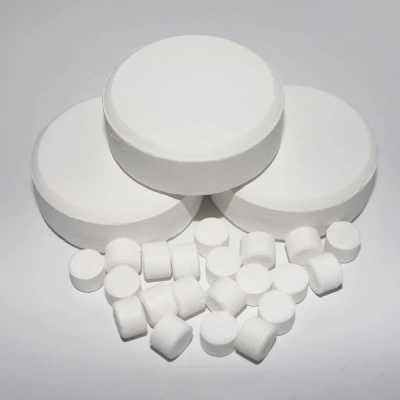Zirconium Dioxide
Available optical coating materials include pure Zirconium Dioxide (ZrO₂), commonly referred to as zirconia, which is white in color. Alternatively, there is the option of oxygen-deficient zirconium, ZrO₂-X, characterized by a gray hue. These materials are offered in both powder and tablet forms, catering to various application needs.
In its most natural form it has a monoclinic crystal structure. However, it can transition to other structures under certain conditions. When heated, it can shift to a tetragonal phase or a cubic structure, depending on the heating temperature.

Zirconium Dioxide (ZrO2) Specifications
| Type | Shape | Size | Color | Purity | Package | Storage |
|---|---|---|---|---|---|---|
| Sinter | Tablet | 18x12 mm 24x14 mm 30x10 mm 8x5 mm,10x5 mm 12x8 mm, 39x14mm (dia.range: 8.42 mm) | White Black | 99.9% 99.99% | 1 Kg/Bag | Avoid exposure to sunlight & acid Keep dry |
| Sinter | Cuboid piece | 15x15x10mm | White Black | 99.9% 99.99% | 1 Kg/Bag | Avoid exposure to sunlight & acid Keep dry |
| Sinter | Granule | 1-3mm; 3-5mm | White Black | 99.9% 99.99% | 1 Kg/Bag | Avoid exposure to sunlight & acid Keep dry |
Characteristics of ZrO2
| CAS Number | Density (g/cm3) | Boiling point (Cº) | Melting point (Cº) | Refractive index at 550 (nm) | Transparency range (µm) | Evaporation source |
|---|---|---|---|---|---|---|
| 1314-23-4 | 5.89/4.17 | 4300 | 2715 | 1.97-2.05 | 0.25-9 | E |
| Applications | Multi-layer coating: AR coating; Hard coating; Glass coating | |||||
ZrO2 Evaporation techniques
The electron beam is used to melt the surface of a ZrO2 tablet in a vacuum chamber, which evaporates, evaporates from a Mo-liner Cu crucible. It only melts superficially and predominantly sublimates.
The resulting ZrO2 vapors are then deposited on a thin film as a coating using the physical vapor deposition technique.
The zirconia tablet must be heated and melted uniformly and effectively by an electron beam to maintain its stability.
The tablet’s vaporization and melting rate and stability are controlled by key operating beam parameters such as beam power, focus, scanning pattern, scanning frequency, and angle of incidence of the electron beam at the target tablet.
